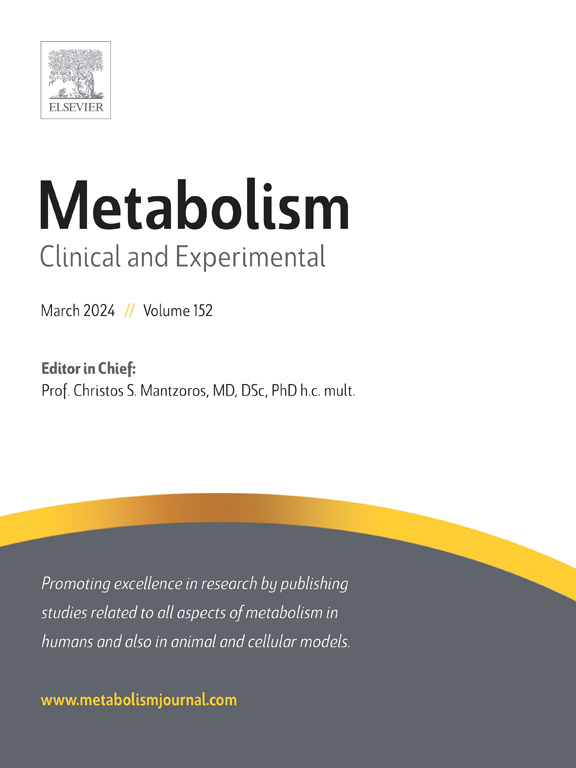乳酸化作为一种代谢表观遗传修饰:从细胞到器官和疾病的机制见解和调控途径
IF 11.9
1区 医学
Q1 ENDOCRINOLOGY & METABOLISM
引用次数: 0
摘要
近年来,乳酸酰化作为一种新的翻译后修饰,在连接细胞代谢和表观遗传调控方面发挥了独特的作用。这种修饰通过动态整合代谢底物的供应和修饰酶的活性,在癌症和非癌症疾病中都发挥了双刃剑效应:一方面,它通过激活修复基因来促进组织稳态和修复;另一方面,它通过驱动恶性表型加剧病理进展。在肿瘤学领域,乳酸化调节了代谢重编程、免疫逃避和治疗抵抗等关键过程,从而塑造了肿瘤微环境的异质性。在非癌性疾病中,包括神经退行性疾病和心血管疾病,其异常激活可导致线粒体功能障碍、纤维化和慢性炎症。现有研究揭示了修饰酶和脱硝酶合作形成的动态调控网络,并确定了影响疾病进展的亚细胞定位和RNA代谢干预等机制。然而,该领域仍存在一些挑战。本文全面综述了乳酸化的疾病特异性调控机制,旨在为其靶向治疗应用提供理论依据。本文章由计算机程序翻译,如有差异,请以英文原文为准。
Lactylation as a metabolic epigenetic modification: Mechanistic insights and regulatory pathways from cells to organs and diseases
In recent years, lactylation, a novel post-translational modification, has demonstrated a unique role in bridging cellular metabolism and epigenetic regulation. This modification exerts a dual-edged effect in both cancer and non-cancer diseases by dynamically integrating the supply of metabolic substrates and the activity of modifying enzymes: on one hand, it promotes tissue homeostasis and repair through the activation of repair genes; on the other, it exacerbates pathological progression by driving malignant phenotypes. In the field of oncology, lactylation regulates key processes such as metabolic reprogramming, immune evasion, and therapeutic resistance, thereby shaping the heterogeneity of the tumor microenvironment. In non-cancerous diseases, including neurodegeneration and cardiovascular disorders, its aberrant activation can lead to mitochondrial dysfunction, fibrosis, and chronic inflammation. Existing studies have revealed a dynamic regulatory network formed by the cooperation of modifying and demodifying enzymes, and have identified mechanisms such as subcellular localization and RNA metabolism intervention that influence disease progression. Nevertheless, several challenges remain in the field. This article comprehensively summarizes the disease-specific regulatory mechanisms of lactylation, with the aim of providing a theoretical foundation for its targeted therapeutic application.
求助全文
通过发布文献求助,成功后即可免费获取论文全文。
去求助
来源期刊

Metabolism: clinical and experimental
医学-内分泌学与代谢
CiteScore
18.90
自引率
3.10%
发文量
310
审稿时长
16 days
期刊介绍:
Metabolism upholds research excellence by disseminating high-quality original research, reviews, editorials, and commentaries covering all facets of human metabolism.
Consideration for publication in Metabolism extends to studies in humans, animal, and cellular models, with a particular emphasis on work demonstrating strong translational potential.
The journal addresses a range of topics, including:
- Energy Expenditure and Obesity
- Metabolic Syndrome, Prediabetes, and Diabetes
- Nutrition, Exercise, and the Environment
- Genetics and Genomics, Proteomics, and Metabolomics
- Carbohydrate, Lipid, and Protein Metabolism
- Endocrinology and Hypertension
- Mineral and Bone Metabolism
- Cardiovascular Diseases and Malignancies
- Inflammation in metabolism and immunometabolism
 求助内容:
求助内容: 应助结果提醒方式:
应助结果提醒方式:


